Today, SevenPonds speaks with Lea Rose, a clinical counselor and psychotherapist with over two decades of experience. She is the founder of the Living and Dying Well Counselling Centre in Melbourne, Australia, and the author of the book “Let’s Talk About It!: Finding Peace with Death and Dying in Everyday Life.”
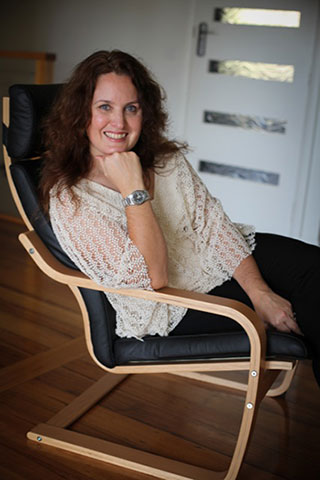
Lea Rose, BA. Dip ed. Adv. Dip Couns. MACA CV
(Credit: learose.com.au)
Juniper: Your two-decade career as a clinical counselor is reflected in the broad range of issues addressed in your practice, and at the Living and Dying Well Counselling Centre. Did your interest in these topics occur around the same time, or evolve over the course of your career?
Lea: At the age of about 23, I was offered a job as an art therapist in the oncology department at the Royal Children’s Hospital in Melbourne. I was completely naive to the fact that I was going to be working with so much death and grief. In those days, the success rate for leukemia treatment was about 11 percent (today it’s around 90 percent). I was working with dying children for about three years, helping them cope with their treatments. At that time there were no grief counseling courses or anything of that sort were available to me. I learned by being there.
Juniper: What have you learned from the dying children you have worked with?
Lea: When Dr. Patch Adams — the “clown doctor” from America — came to work with me and a four-year-old girl, he taught me how to connect with the person inside the illness, and not see the illness at all anymore. That’s when my career changed: From that moment, I was working with people, not illnesses. I don’t react – if someone comes in full of cancer and they’re looking terrible, I look at what’s happening with the person, not their body. I think the person gets lost in their symptoms if the people around them are so traumatized by the situation, caught up in their own grief, guilt, or fear, that they don’t know how to connect to the patient’s personhood. We need to learn how to look inside and ask, how are you doing in there?
Juniper: Do you think that the pathologization of death — this focus on the symptoms — is perhaps a systemic, cultural coping mechanism to avoid confronting the fear of human mortality? In your book “Let’s Talk About It,” you address the need to shift cultural attitudes toward dying and grief. What, in your opinion, could shift in the medical system in terms of support for dying people and their families? How could things be different?
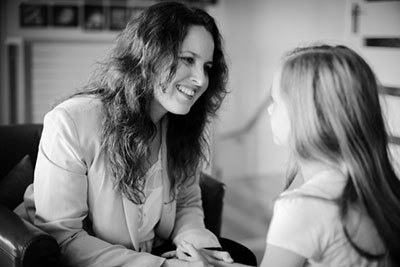
Credit: learose.com.au
Lea: Things are getting worse in Australia. People are getting more disconnected and they are hoping for euthanasia so they don’t have to deal with death at all. The debate around euthanasia is getting more negative. I’m not against it, but I’m against how it’s coming in, without death education in the middle. For example, my mother just died, and my father, at age 75, says euthanasia should be legal regardless of your physical symptoms, so that you don’t have to get old, think of illness, or face death. I have a feeling that if euthanasia is legalized in Australia, that’s what would happen. It might settle down after a time, but I think it will really compromise a person’s ability to die well. We’re already not talking about death anyway, and now there’s an easy way out of not accepting it. I’ve seen people in America, not even in the first stages of dying, choosing euthanasia. Just because you’ve got a life-threatening illness, that doesn’t mean you’re dying. There’s a real difference.
In my experience, people are terrified of death, except the people with terminal illnesses. They definitely are afraid when they first come to see me, and then it changes. We work through the stages of death of the physical body, and then the client can see, well gosh, so that’s what happens. There is no death education, so of course people are afraid.
I want to see death education in schools. If we start at the bottom, it will be a lot easier. It’s harder to teach someone in their 70s about death — it’s easier to learn when you’re a lot younger. My 13-year-old daughter recently did a public lecture for her school on why death education is important, and the teachers couldn’t cope with the reality of her speech. The kids were also basically lost, as if these ideas had come totally out of left field, even though many of them had lost grandparents. They’ve had sex education, drug and alcohol education, pornography and cyber-bullying education…everything but grief, loss and death education!
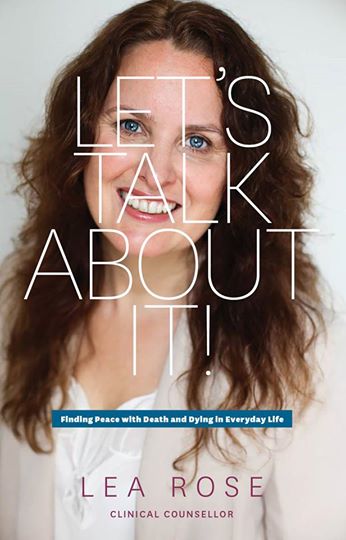
Credit: learose.com.au
There’s a movement that started about three or four years ago when I published my book, but it’s gotten lost in the euthanasia debate. Mainly, there are three of us focusing on dying well: the Death Walker, the Death Talker, and the Death Educator (me). Barely anyone knows our work, to the point where actors can get up and talk about why euthanasia needs to be legalized, but the people who have been doing this work for years don’t get radio time, television or magazine coverage. It’s also about money. The nursing homes in Australia don’t want euthanasia legalized because their facilities would be empty. The drug companies making products for euthanasia will also have a stake in this. The debate isn’t about human existence – it’s about business. Until the balance of public death education comes in, how will people make informed choices about what dying well means?
I know a 40-year-old woman with five young children who has a body full of cancer. A year and a half ago, she was given six months to live. She wishes to undergo treatments that will keep her alive as long as possible so that her children will have a mother for more of their childhood. Everyone in her world was in denial about her condition until she started blogging about how she will die of cancer, and what she needs is people to help support her children. If you ask her if she’s afraid of dying, the answer is no — she’s afraid of leaving her children.
So the euthanasia question is about age, too. I have people in their 70s who have lost their 50-year partners who just want to die now, so my challenge with them is to help them find purpose in life. I ask them what haven’t they done in their lifetime that they want to. What can they do to give back? And usually they find something that gives them a new lease on life.
Juniper: Would you say that “dying well” means to die as a fully alive human being?
Lea: Yes, I love that! Exactly. The woman who has the children is like that: fully engaged, giving everything she can, very close to her husband, living life, enjoying life while she’s dying. That’s what I’d like to see everywhere. Of course there are people being kept alive on life support longer than they should be for anyone’s benefit including their own, but that’s actually a very small percentage of people, especially in populations with cancer.
Check back with us next week for Part Two of this interview!

 What is Public Death Education? An Interview with Lea Rose, Part One
What is Public Death Education? An Interview with Lea Rose, Part One

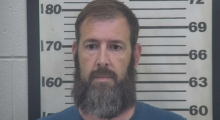
 Funeral Home Owner Chris Johnson Spending Halloween in Jail
Funeral Home Owner Chris Johnson Spending Halloween in Jail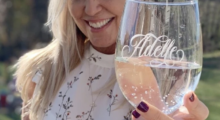
 Our Monthly Tip: Toast a Loved One with a Personalized Glass
Our Monthly Tip: Toast a Loved One with a Personalized Glass
 My Cousin’s Death Taught Me the Meaning of Life
My Cousin’s Death Taught Me the Meaning of Life














